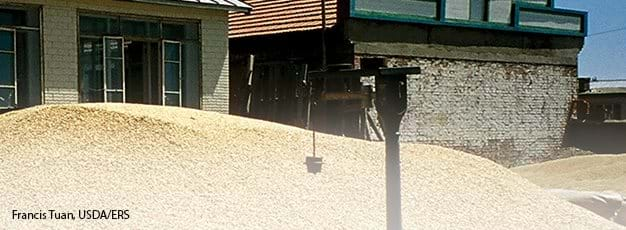China's New Farm Policies Have Modest Impact

In a reversal of its longstanding practice of taxing farmers, the Chinese Government introduced direct subsidies to grain producers in 2004 and announced plans to eliminate its centuries-old agricultural tax. China also offered subsidies for seed and machinery purchases, boosted spending on rural infrastructure, extended more loans to farmers, and continued a program of domestic grain market liberalization. These policies are intended to address the country’s widening urban-rural income gap and boost grain production. So far, the changes have had limited impact, but China may introduce policies with stronger incentives in coming years.
The new policies are symbolically important, but modest in size and impact. The grain subsidies of $1.4 billion were spread over 140 million farms and amount to less than 2 percent of the value of grain production. Elimination of the agricultural tax is worth $5 to $7 billion, spread over some 200 million households, and will take place over several years. The combined benefits of subsidies and tax relief in 2004 are estimated to be about $5 per rural household member.
Rural income and grain production in China did rise sharply during 2004, but the gains were due mostly to a combination of sharply higher farm prices and vigorous economic growth that boosted nonfarm earnings. The policies resulted in only modest increases in income for most rural families. The subsidies provided little incentive to plant more grain since they were in most cases based on historical grain plantings.
China's agricultural policy will evolve as policymakers try to balance multiple objectives and fine-tune policies. In early 2005, China announced that it will continue granting subsidies, speed up the elimination of the agricultural tax, limit increases in input prices, and set support prices for some grains. China also announced its intentions to place greater emphasis on raising grain yields by improving plant breeding and to raise investment in infrastructure. China may also adjust its subsidy methods. China has experimented with price- and production-linked subsidy policies in limited geographic areas, and such policies could be used more widely if policymakers believe that farmers need stronger incentives to produce grain.
China's New Farm Subsidies, by Fred Gale, Bryan Lohmar, and Francis Tuan, USDA, Economic Research Service, February 2005
China, by Fred Gale and Jessie Lin, USDA, Economic Research Service, June 2024

